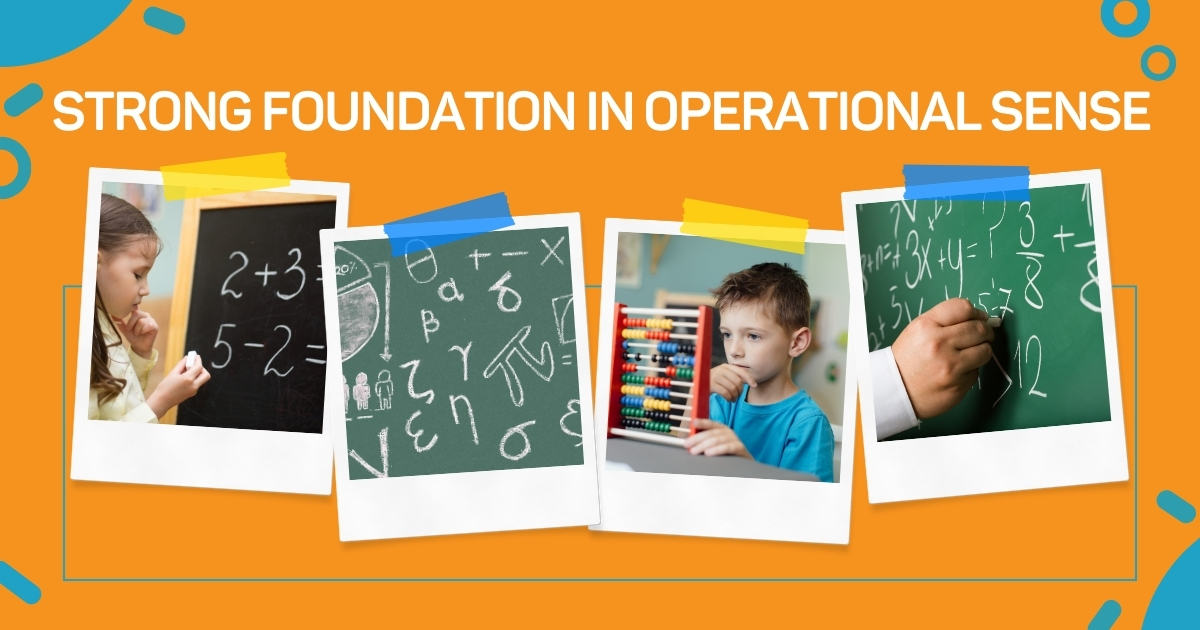Understanding math goes beyond memorizing formulas or crunching numbers. At its core, math is about reasoning and problem-solving. One of the most essential skills to master in early math education is operational sense.
But what exactly is operational sense? It’s your ability to understand and use mathematical operations like addition, subtraction, multiplication, and division. Operational sense helps learners break down complex problems into manageable steps and apply math confidently in daily life, from budgeting to decision-making.
For homeschool parents, teaching operational sense in math is a key building block for your child’s success. When taught early, it lays a foundation for tackling advanced mathematical concepts, such as algebra and geometry. But where do you start?
Here, we’ll explore six actionable strategies to develop operational sense, ensuring your homeschooler is equipped with math fundamentals for young learners. By integrating these methods, you’ll also support the broader goal of developing number sense skills that stick with your child for life.
Understanding the Four Basic Operations
At the heart of operational sense are the four basic operations: addition, subtraction, multiplication, and division. Think of these as the building blocks of all math concepts. Without a proper understanding of these operations, tackling higher-level math becomes significantly harder.
How can you ensure a strong foundation? Practice is key. Here are some ideas to make learning more engaging:
- Hands-on Activities: Use manipulatives like beads or counting blocks to solidify early addition and subtraction concepts.
- Daily Scenarios: Practice multiplication while grocery shopping (e.g., “If apples are $3 each, how much does a dozen cost?”).
- Math Games: Interactive games add a fun twist to learning. Look for apps or printable games centered around these operations.
When kids see how these operations play out in their lives, they’re more likely to retain what they’ve learned.
Mastering the Order of Operations
Have you heard of PEMDAS or BODMAS? These acronyms stand for Parentheses, Exponents, Multiplication/Division (from left to right), and Addition/Subtraction (from left to right). The order of operations is a critical concept because it ensures accuracy when solving equations. Without it, you could end up with wildly different answers to the same problem!
Here’s an example. What’s the answer to 3 + 5 × 2? If you add first, you’ll get 16. But if you follow the order of operations and multiply first, the correct answer is 13.
Children often struggle with this concept early on. To help avoid confusion:
- Encourage consistent practice with worksheets or online tools.
- Provide step-by-step examples that show how to approach problems correctly.
- Point out common mistakes, like forgetting to resolve parentheses first, so they know what to watch for.
Mastering the order of operations ensures that your homeschooler approaches problems with confidence and accuracy.

Building Mental Math Agility
Have you noticed how powerful it is to calculate something quickly in your head? Mental math isn’t just a handy skill; it boosts speed, accuracy, and confidence. It allows learners to process numbers flexibly, which is a hallmark of strong operational sense.
A few ways to sharpen mental math include:
- Number Talks: Pick a problem and discuss different approaches to solve it mentally. For example, ask, “What’s 72 divided by 9?” and talk through shortcuts like recognizing that 72 is 9 times 8.
- Estimation Challenges: Challenge your child to estimate totals during activities like shopping or meal prep. Asking, “How much will lunch cost for three people?” encourages quick thinking.
- Daily Practice: Dedicate 5-10 minutes a day to practicing mental math.
Research shows that consistent math practice improves efficiency; even five extra minutes a day can make a difference.
By integrating these strategies into daily routines, you can help your child build confidence and proficiency in mental math. Consistent, practical application not only reinforces core skills but also fosters a positive attitude toward mathematics, preparing them for future challenges in an increasingly data-driven world.
Making Connections Between Operations
A key aspect of teaching operational sense in math is showing how each operation connects to others. For instance, addition and subtraction are opposites, just as multiplication and division are. Recognizing these relationships helps students approach problems logically rather than memorizing rules in isolation.
Visual aids are great for demonstrating these connections:
- Number Lines: Use these to show how addition moves forward and subtraction moves backward.
- Fact Families: Group related facts together (e.g., 3 + 5 = 8, so 8 – 5 = 3). These help children see that operations are interrelated.
When learners understand the “why” behind their work, they build deeper comprehension and practical problem-solving skills.
Solving Real-World Problems
Math is everywhere, from cooking and shopping to building a budget. Applying operational sense in real-world scenarios not only makes learning relatable but also gives students a sense of accomplishment.
Here’s how to incorporate real-world problem-solving into homeschooling:
- Budgeting: Teach your child how to manage a small allowance, track expenses, and calculate savings.
- Cooking: Scale recipes up or down and calculate ingredient quantities using multiplication and division.
- Word Problems: Create scenarios like calculating the cost of tickets for a family outing, and have your child figure out which operations to use.
When children see how math plays a role in everyday life, they develop an appreciation for its usefulness.
Encouraging Critical Thinking in Math
Math isn’t just about getting the right answer; it’s about understanding why methods work. This is where critical thinking comes into play. Critical thinking strengthens operational sense by encouraging students to question and analyze their work rather than apply rules blindly.
Here’s how to foster critical thinking:
- Ask “Why?” Questions: When your child solves a problem, ask them to explain their reasoning.
- Reflection Time: After completing a problem set, have your child review their work and discuss what strategies were effective.
- Collaborative Discussions: Talk through challenging problems together, comparing approaches.
This approach helps homeschoolers become independent thinkers who feel confident tackling new math challenges.
Building a Strong Foundation for Lifelong Math Success
Operational sense serves as the framework for solving math problems and making sense of numbers in everyday life. From the basics of addition and subtraction to the complexities of real-world problem-solving, teaching operational sense in math gives students the power to think critically and flexibly.
By focusing on math fundamentals for young learners, parents can lay the groundwork for success. The six strategies we’ve covered—understanding basic operations, mastering the order of operations, sharpening mental math, connecting mathematical ideas, solving real-world problems, and fostering critical thinking—not only build operational sense but also nurture a lifelong appreciation for math.
Above all, be patient and consistent. Learning math is a process, not a race. Celebrate small victories, and inspire curiosity in every lesson. If you’re ready to explore more resources that make homeschooling math engaging and effective, visit Dropkick Homeschool Resource. We’re here to help transform the way your family experiences math.





